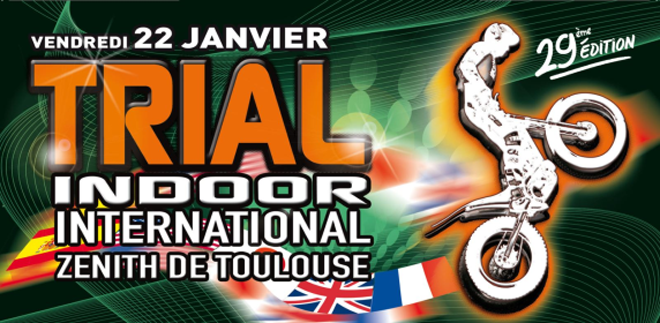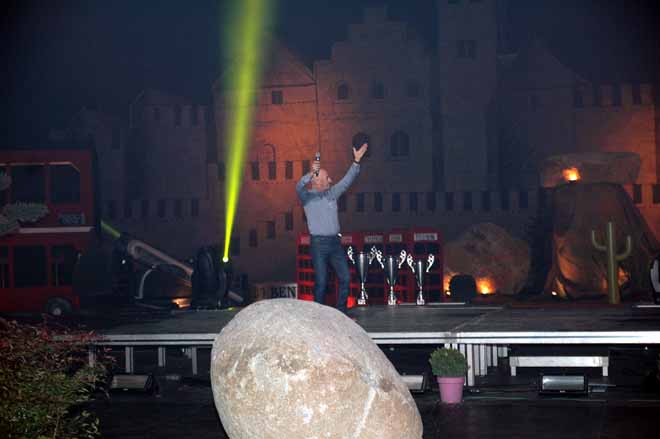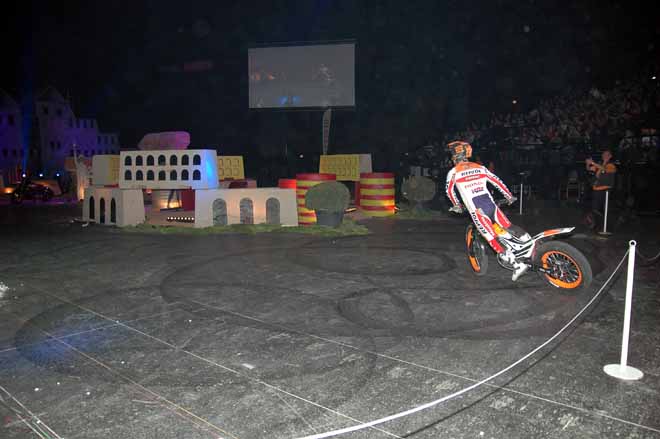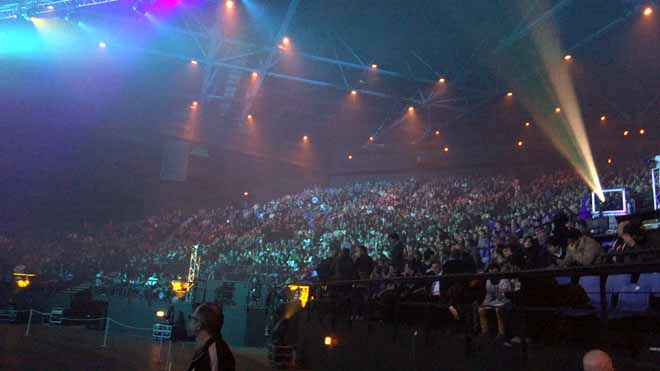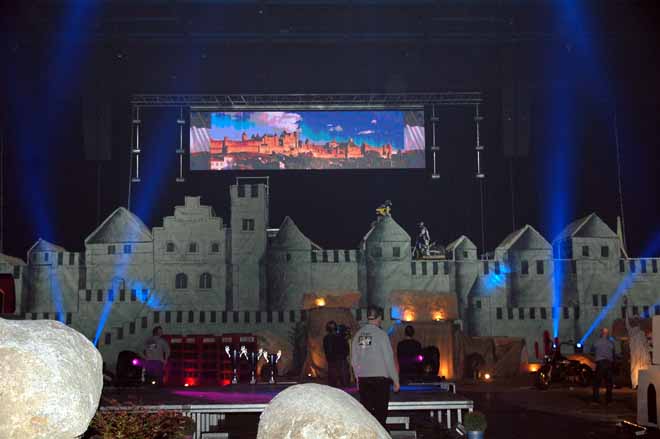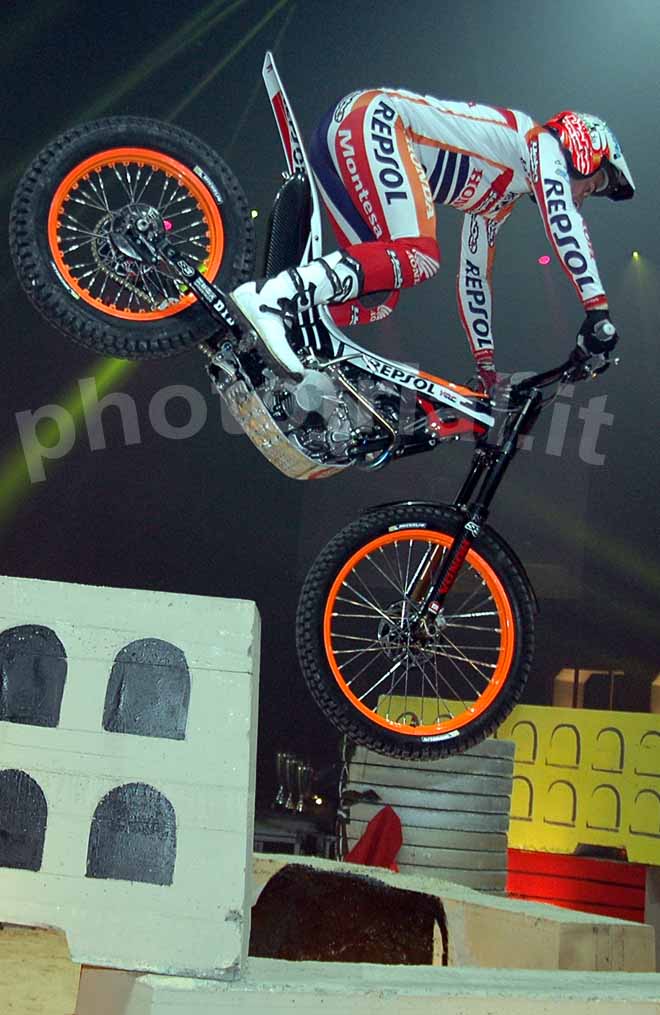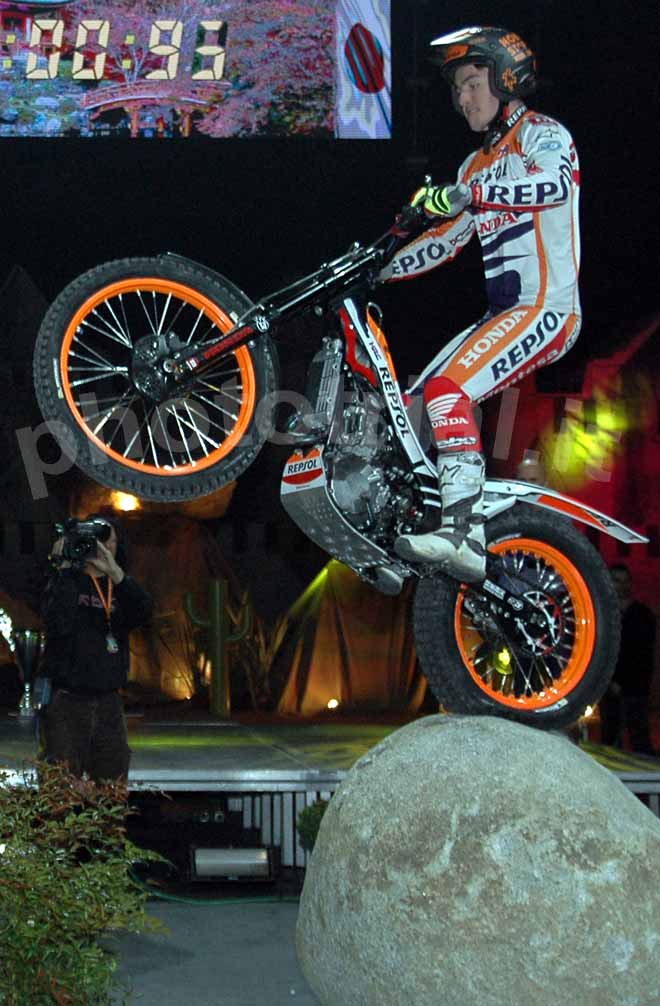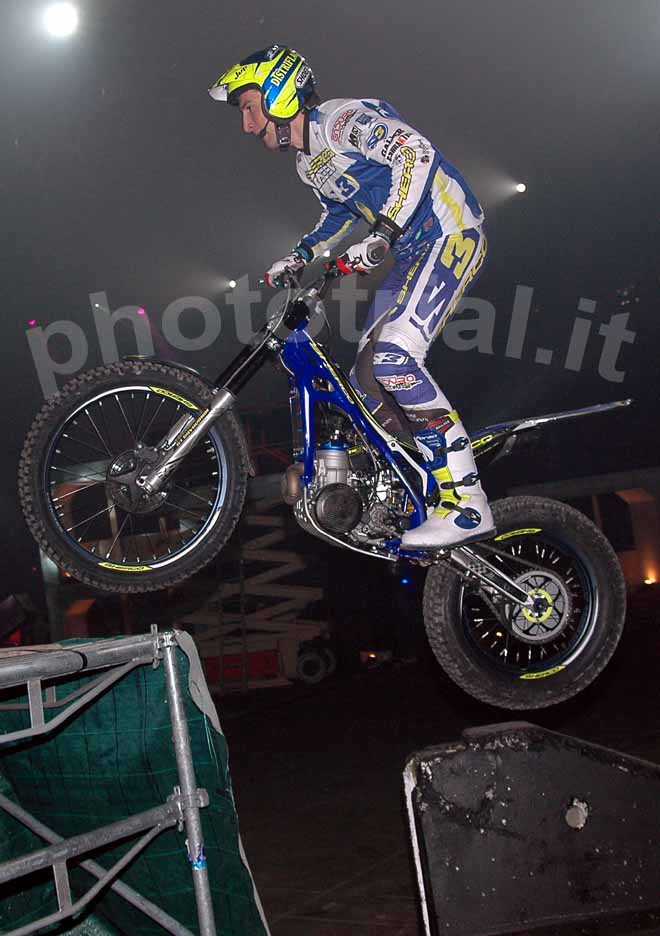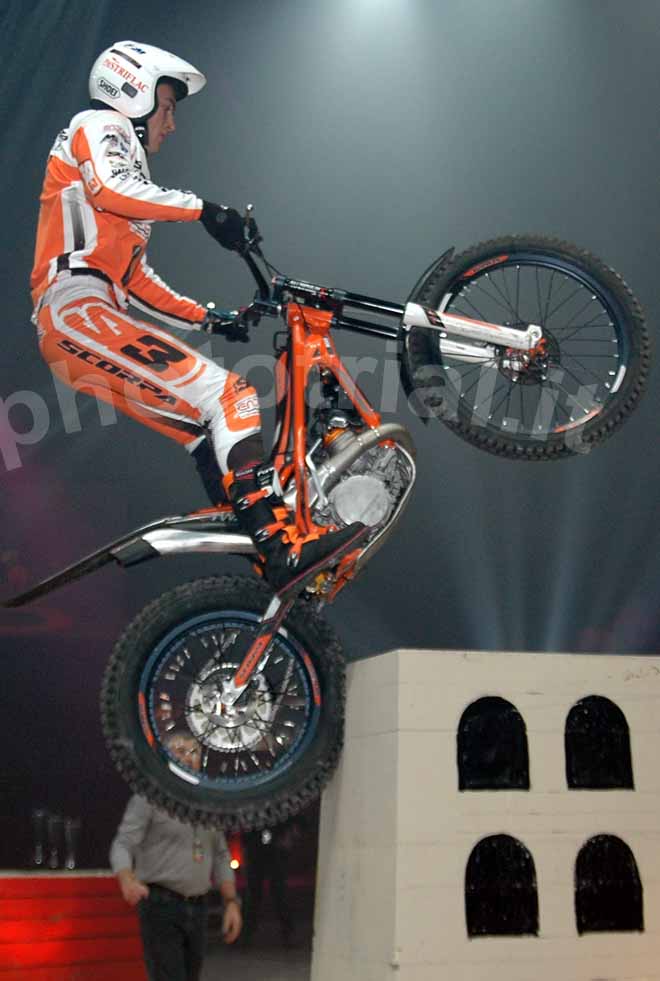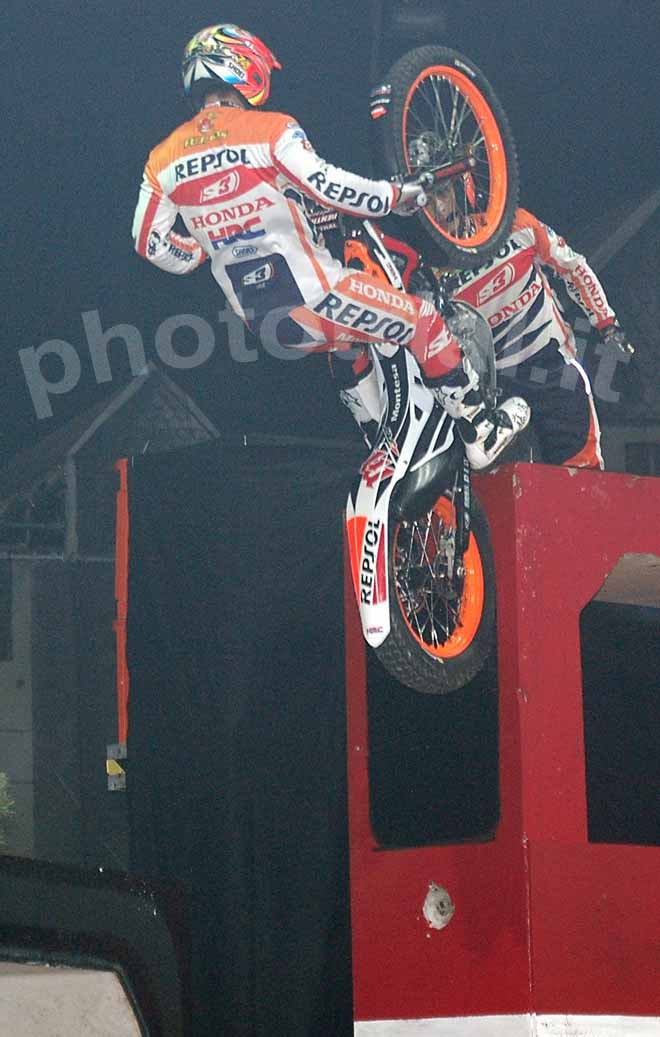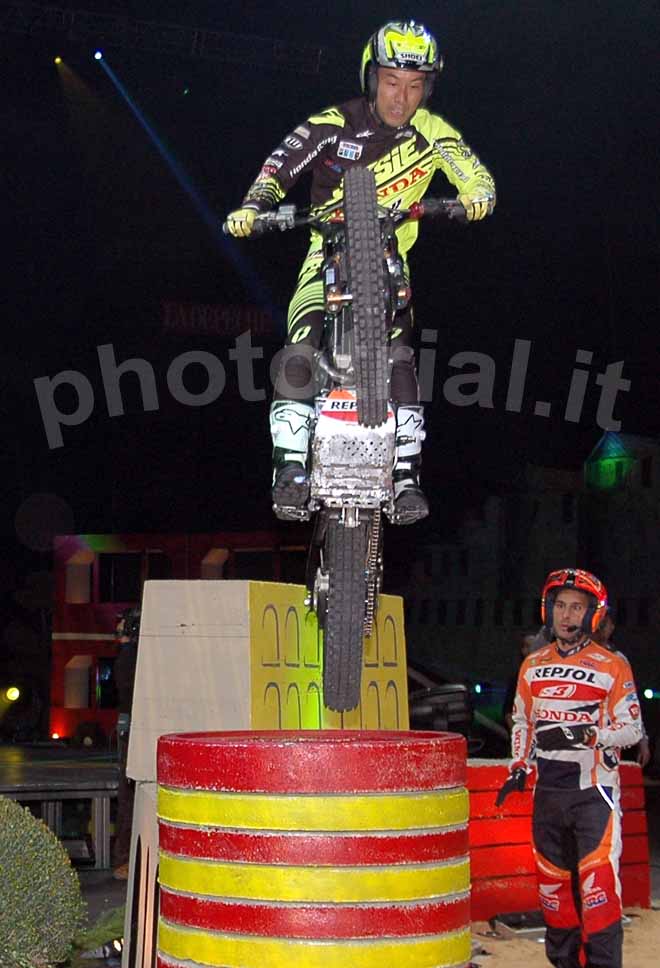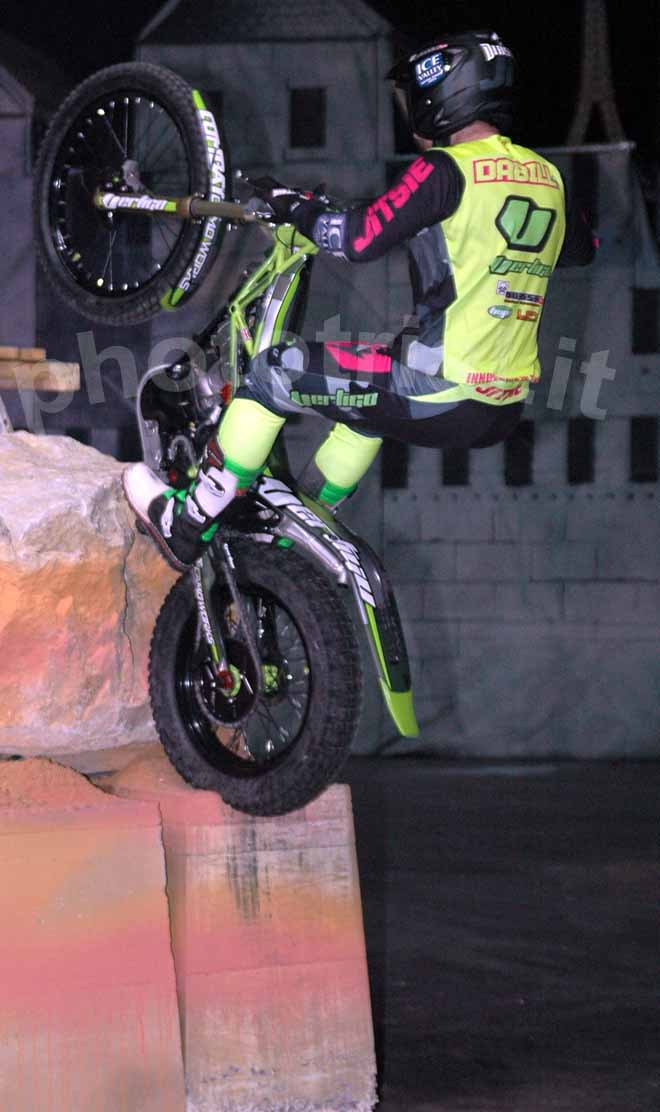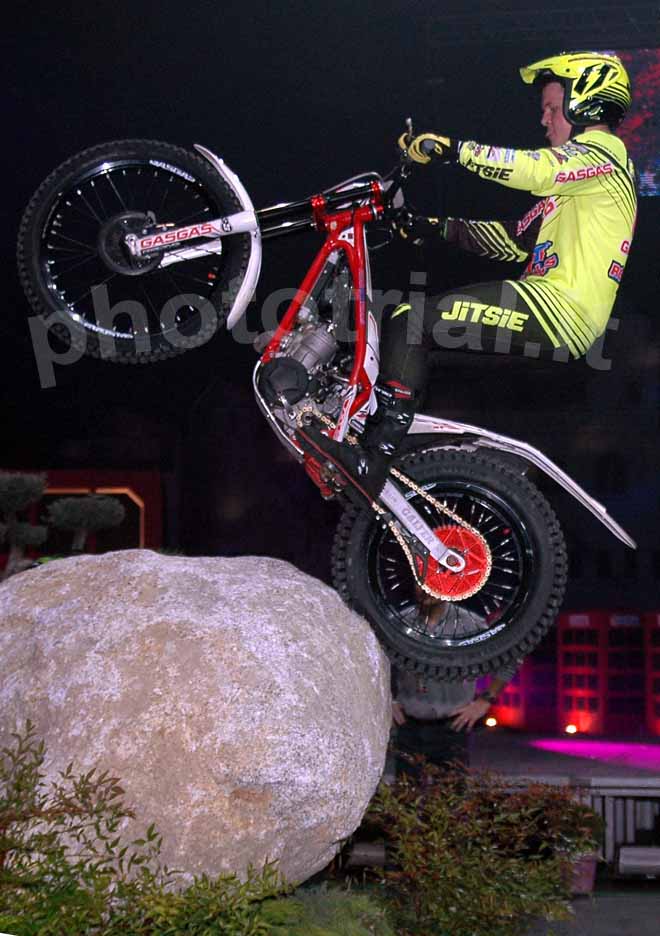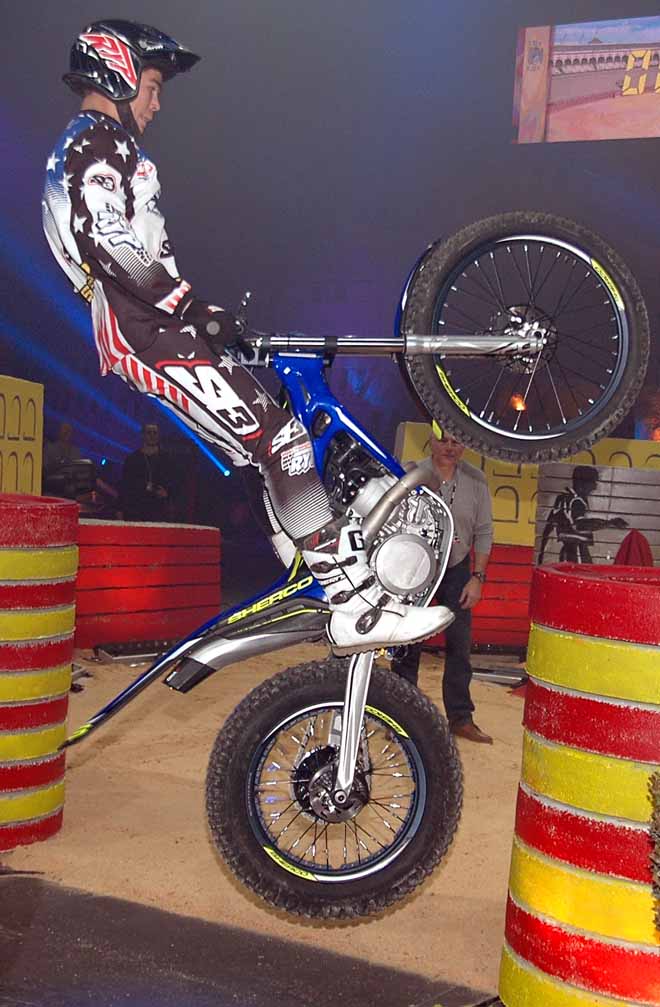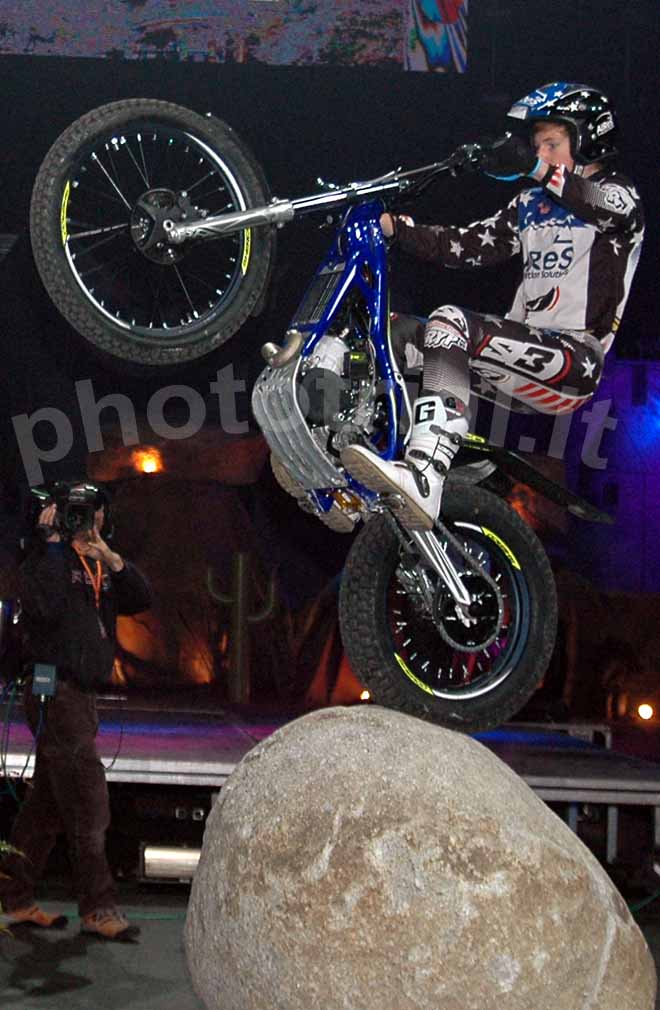24/01/16 - Trial Indoor: one possible point to restart!
Still in order to bring new people to our specialty, why not return to the past, when Trial Indoor had just this task? To offer, protected from the weather, to an audience sitting comfortably, demonstrations of what the acrobats of Trial can do. It fitted perfectly in what seen in Touluose, French town close to the Pyrenees, last Friday, on the occasion of its 29th International Indoor Trial. Bernard Estripeau - we might call Mr. Indoor Trial - has once again outdone himself. Organizer, designer of sections, speaker, real leader of the crowd. And real crowd it was! To see his 333 ° indoor, more than 5,000 people came: all clapping, yelling express amazement. Estripeau has this time invented a kind of Trial des Nations indoor.
Five sections for five teams of two riders each representing five nations . Similar to what officially proposed as the FIM X - Trial des Nations , but with a formula invented at that moment just for show . Choreographic 5 sections : a Zen garden, tribute to Japan represented by Takahisa Fujinami and Tomoyuchi Ogawa ; a Plaza de Toro for Toni Bou and Jaime Bustò ; a red double-decker bus and red phone boxes for James Dabill and Jack Price; a sort of Monument Valley to honor the brave young Americans , Brian Roper and Andrew Putt; finally, “la citè”, the fortress of Carcassonne ( 70 km from Toulouse ) , as the longest and demanding section, almost to remember the role of France, star attraction and winner at all costs of this event , represented by Alexandre Ferrer and Benoit Bincaz.
Two laps where each team had to face all the sections with a single pilot. In second lap sections faced in the opposite way. But with Spain still too strong , in order to uphold the interest of the public , Estripeau has invented the handicap . Both Bou and Bustò had to enter each of the five hazards , then double scores for them to be compared to all the others. Very well studied the levels with increasing difficulty and the starting order of the riders , from the less good in order to create an expectation among the public and so it was.
Though full of enthusiasm, grit and courage the two Americans - not having a national championship indoor and since there are still a few races of this type in the " land of opportunity " - could not be classified with honor in the last place . A little better the British's with a prominent rider as Dabill , flanked by a promising young man named Price , they finished in penultimate place. Definitely more valued the Japanese couple , although Tomoyuchi Ogawa, now close to 40 years, is quite "stale" for indoor , he has fared quite well , while Fujigas , especially in the second part has dragged his team to third place . So the fight for supremacy has been traced to challenge France - Spain handicapped.
With frequent twists , the final score was equal . It does matter whether France with Ferrer in the discriminant section chosen as tie-break has spent more time than Spain came with Bustò in that occasion . France had to win and they did . But it is not the winning team what real count in this Bohemian competition. What it matters is that almost 5000 people are amused and have followed with interest the whole event, thanks also to the two maxi - screen intelligently placed , and the two cameramen supported by a perfect direction . While sitting and simply turning their head the spectators could choose to look relatively far the rider in action into the section or follow him closely on the screen.
The organizers said that the vast majority of the audience does not belong to the world of Trials. So the aim of promoting the Trial to new people has been reached. But now there would be the icing on the cake. Convince those people to try the Trials. To project - for example in a forthcoming edition, during the interval between the two laps – some videos of amateur competitions, schools of Trial, mountain trips. Talk to them about where they could get a free ride with a motorcycle supported by the factories. This link is what has always been missing or was too weak. To transform the potential energy created attracting the public thanks to a show at high level (and would not work if they were proposed to watch an amateur competition, so let's give up in wanting to simplify the Trials!) into kinetic energy that makes known the other aspect of our specialties, the extreme flexibility in the search for obstacles to fit everyone.
------------------------------------------------------------------------------------------
Trial Indoor un possibile punto da cui ripartire!
Sempre nell'ottica di avvicinare nuova gente alla nostra specialità, perchè non tornare al passato, quando il Trial indoor aveva giusto questo compito? Offrire, al riparo dalle intemperie, ad un pubblico comodamente seduto, dimostrazioni di quello che i funamboli del Trial sanno fare. Perfettamente calato nella parte quanto vissuto nella città francese di Toulouse, ai piedi dei Pirenei, venerdì scorso, in occasione del suo 29° Trial indoor Internazionale. Quello che potremo definire il signor Trial Indoor, Bernard Estripeau ha ancora una volta superato se stesso. Organizzatore, disegnatore di zone, speaker, vero trascinatore di folla. Perchè di folla si è trattato! A seguire il suo 333° indoor, più di 5000 persone, stipate in un palazzetto stracolmo: tutti ad applaudire, urlare, manifestare stupore. Estripeau, che abbiamo avuto il piacere di intervistare per Motosprint (sarà pubblicato su uno dei prossimi numeri su Motosprint) si è stavolta inventato un Trial delle Nazioni indoor.
Cinque zone per cinque squadre di due piloti ciascuna in rappresentanza di cinque nazioni. Simile a quello che ufficialmente la FIM propone come X-Trial delle Nazioni, ma con una formula inventata lì per lì solo per lo spettacolo. Coreografiche le 5 sezioni : un giardino Zen, omaggio al Giappone con in campo Takahisa Fujinami e Tomoyuchi Ogawa; una Plaza de Toro per Toni Bou e Jaime Bustò; un Bus rosso a due piani e cabine telefoniche rosse per James Dabill e Jack Price; la Monument Valley ad onorare i giovani coraggiosi americani, Brian Roper e Andrew Putt; infine la citè, fortezza di Carcassone (70 km da Tolosa) , come zona più lunga ed impegnativa, quasi a ricordare il ruolo della Francia, protagonista e vincitrice a tutti i costi di questo evento, rappresentata da Alexandre Ferrer e Benoit Bincaz.
Due giri con ogni squadra che doveva affrontare con un solo pilota tutte le zone, prima in un senso poi nell'altro. Ma con una Spagna sempre troppo forte, per poter tenere alto l'interesse del pubblico, Estripeau si è inventato l'handicap. Entrambi Bou e Bustò hanno dovuto percorrere le 5 zone, quindi il doppio di punteggi, con nessun scarto ovviamente. Ben studiato il livello con difficoltà crescente e l'ordine di partenza dei piloti, dai meno bravi in modo che tra il pubblico si crei un'aspettativa e così è stato.
Sebbene pieni di entusiasmo i due americani, ai quali non è mancata grinta e coraggio, ma non avendo un campionato nazionale indoor ed essendoci ancora poche gare di questo tipo nella “terra delle opportunità”, non hanno potuto che classificarsi con onore all'ultimo posto. Un po' meglio gli inglesi con un pilota affermato come Dabill, affiancato da un giovane promettente di nome Price, penultimi. Decisamente più quotata la coppia nipponica , nonostante Tomoyuchi Ogawa sia “vecchiotto” per gli indoor, ormai prossimo ai 40 anni, se l'è cavata discretamente, mentre Fujigas, sopratutto nella seconda parte ha trascinato la squadra al terzo posto finale. Dunque la lotta per il primato si è ricondotta alla sfida Francia-Spagna handicappata.
Con frequenti i colpi di scena, il punteggio finale è stato di parità. Poco importa se la Francia con Ferrer nella zona discriminante abbia impiegato più tempo della Spagna scesa in campo con Bustò nell'occasione. Doveva vincere la Francia e così è stato. Ma non è la nazione vincente di una serata impostata sul goliardico che conta. Conta che 5000 persone si siano divertite ed abbiano seguito con interesse tutta la manifestazione, anche grazie ai due maxi schermo intelligentemente piazzati, ed ai due camera men coadiuvati da una regia perfetta. Stando seduti e semplicemente girando la testa lo spettatore poteva scegliere se guardare da relativamente lontano il pilota sulla zona o seguirlo da vicino sullo schermo.
A detta dell'organizzatore la stragrande maggioranza del pubblico sugli spalti non appartiene al mondo trialistico. Quindi l'obbiettivo di promuovere il Trial verso gente nuova è stato raggiunto. Adesso però servirebbe la ciliegina sulla torta. Convincere quella gente a provare il Trial. Proiettare, ad esempio in una prossima edizione, nell'intervallo fra i due giri dei filmati di gare amatoriali, di scuole di Trial , di gite motoalpinistiche. Parlare loro di dove potrebbero fare un giro gratuito con una moto messa a disposizione delle Case. Questo anello di congiunzione è quello che è sempre mancato o è stato troppo carente. Trasformare l'energia potenziale creata dall'attrazione che ha il pubblico da uno spettacolo di questo tipo ( e non avrebbe se gli fosse proposto di andare a vedere una gara amatoriale, quindi smettiamola col voler semplificare il Trial!) in energia cinetica che fa conoscere l'altro aspetto della nostra specialità, l'estrema flessibilità nella ricerca di ostacoli alla portata di tutti.
------------------------------------------------------------------------------------------
